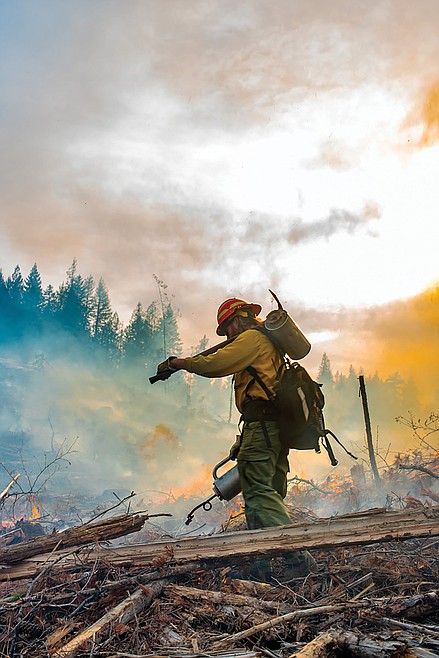The power of partnerships
A heavily timbered swath of almost 80 square miles of mixed-ownership land in northern Idaho is managed using a model of collaboration that is becoming more common across the landscape.
The Buckskin Saddle project is among more than 21 million acres of forestland in the Gem State where private landowners and state and federal forest managers work side-by-side with industry, conservationists and environmental groups to make a healthier forest.
Forest collaboration initiatives aren’t new, but they are becoming the modus operandi in a state known for its sweeping forest panoramas.
In a recent study by the University of Idaho, researchers found that, from planning to completion, collaborative projects required no more time than traditional ones. They treated larger areas and integrated multiple components like watershed restoration, tree thinning and prescribed burns, while building positive relationships around a passionate subject.
“I view collaborations as pretty much necessary to get work done,” said Tom Schultz of Idaho Forest Group, one of the nation’s largest lumber producers.
A decade ago, red tape, litigation and environmental hurdles often stymied timber-harvesting in the state where 80% of forest land is publicly owned by the federal government and managed by the U.S. Forest Service.
Since collaborations were adopted, however, harvesting and timber management projects — especially on federal lands — have seen a steady uptick.
“Collaborative groups have a vested interest in the outcomes, so they work through the issues,” said Jeanne Higgins, former forest supervisor on the Idaho Panhandle National Forest, home of the Buckskin Saddle project. “Those projects don’t stall or get hung up in litigation.”
In the Nez Perce-Clearwater National Forest, the amount of timber offered for sale recently hit its highest point in nearly three decades. In fiscal year 2020, the forest sold 84.5 million board feet of timber, the most since 1991.
“That doesn’t happen without the support of local communities and counties,” Schultz said.
Distrust among conservationists, timber companies and government managers was one of the biggest hurdles to overcome, said John Robison of the Idaho Conservation League.
Conservation groups and timber companies were historically on opposing sides of forest management issues, but a shared concern about forest health and wildfires has brought these groups together.
“Small successes in collaboration led to bigger ones and stakeholders developed confidence in the process and its outcomes,” Robison said. “Everyone participates in good faith.”
Forest collaborations include private citizens, area tribes and county commissioners. Like other initiatives, the proposals are presented to the public for review and comment.
Sometimes, partners fill in where there is a need, like the Idaho Department of Lands (IDL) collecting data and developing a plan using resources that a cash-strapped Forest Service doesn’t have.
“We help fill in the gaps,” said Jon Songster, a bureau chief at IDL.
In addition to sharing staff and funding, the Forest Service and IDL belong to a governor-appointed advisory group that identifies management priorities and opportunities for collaboration on Idaho’s forestlands. Projects that are agreed on through collaboration have the best chance of moving forward, said Brad Smith of the Idaho Conservation League.
“The collaborative groups develop recommendations that have the support of the community,” Smith said. “If the Forest Service and the state are responsive to those recommendations, then they can feel confident that the project will move forward.”

